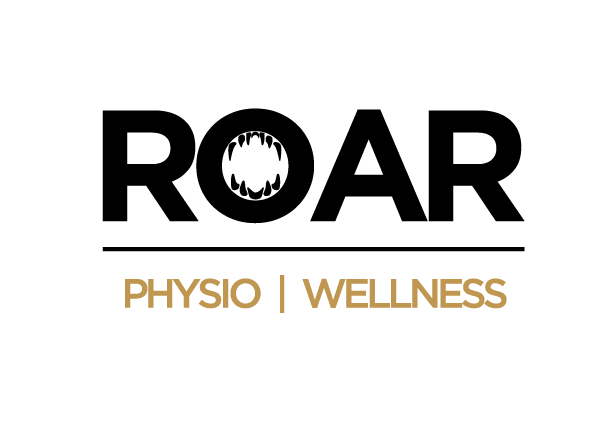Physiotherapy is often seen as a solution for injury recovery—but its benefits extend far beyond rehabilitation. Whether you’re an athlete pushing your limits or someone simply looking to stay healthy and active, physiotherapy offers valuable tools for supporting your fitness goals. From improving flexibility and strength to guiding safe training and faster recovery, physiotherapy is a proactive, evidence-based approach to movement and performance. In this blog, we’ll explore how physiotherapy supports fitness at every level—covering exercises, recovery methods, injury prevention strategies, and more.
Benefits of Physiotherapy for Overall Fitness and Health
Physiotherapy supports more than just rehabilitation—it enhances physical health, movement quality, and functional capacity, which are all essential for staying fit and active. Key benefits include:
- Improved Musculoskeletal Function: Physiotherapy targets key muscle groups and joints, enhancing strength, stability, and control across the body.
- Enhanced Recovery Between Workouts: By managing muscle tension and addressing imbalances, physiotherapy can accelerate recovery and reduce post-exercise soreness.
- Better Movement Efficiency: Improved biomechanics means less wasted energy during movement, allowing for more efficient exercise performance.
- Long-Term Joint Health: Physiotherapy helps offload pressure from overused joints, reducing wear and tear associated with repetitive activity.
- Chronic Condition Management: For individuals with arthritis, postural imbalances, or previous injuries, physiotherapy enables safe participation in fitness routines.
- Mental and Physical Well-being: Regular movement, combined with reduced pain and better body awareness, supports both mental clarity and physical health.
By integrating physiotherapy into a fitness routine, individuals can enhance overall function while protecting long-term health.
Supporting Strength and Endurance: The Role of Physiotherapy
Physiotherapy exercises are tailored to improve muscular strength, cardiovascular endurance, and neuromuscular control—each of which is foundational to physical fitness. These commonly include:
- Resistance Band Training: Offers variable resistance levels and targets multiple muscle groups for strength building without joint strain.
- Bodyweight Functional Movements: Exercises like squats, lunges, and push-ups are adapted to focus on control, alignment, and injury resistance.
- Plyometric Drills: Controlled jumping and bounding movements are introduced to improve muscular power and anaerobic conditioning.
- Isometric Exercises: Holding positions like wall sits or planks helps develop static strength and core stability essential for many sports.
- Circuit-Based Training: Combining strength and cardio exercises in sequence supports endurance, agility, and functional performance.
- Therapeutic Weight Lifting: When appropriate, physiotherapists guide clients through free-weight or machine-based exercises to promote safe strength progression.
These exercises are scalable and modifiable, making them suitable for beginners, experienced athletes, or anyone looking to build fitness safely.
Can Physiotherapy Help With Flexibility and Mobility for Fitness Goals?
Yes—physiotherapy plays an essential role in improving flexibility and mobility, both of which are critical for achieving fitness goals and preventing injury. A physiotherapist will begin by identifying any movement restrictions or postural issues that could be limiting performance or causing discomfort. They then use a variety of techniques to address these issues, such as dynamic and static stretching programs that improve tissue elasticity and lengthen tight muscles. Joint mobilization techniques may be used to restore natural motion in stiff joints, while soft tissue treatments like myofascial release target areas of tension in the muscles and fascia.
Therapists also work on neuromuscular re-education, which helps retrain the body to move more efficiently and with greater awareness. Improving posture is another important component, as proper alignment enhances both flexibility and movement mechanics. Tools like foam rollers, massage balls, and stretching straps are sometimes integrated into the treatment to support mobility gains. As flexibility and mobility improve, individuals can move with less restriction, experience better form during exercise, and reduce the risk of strain or injury.
How Physiotherapy Benefits Professional Athletes and Active Individuals
Absolutely. Whether you’re competing at a high level or staying active through regular exercise, physiotherapy provides targeted support to optimize performance and prevent injury. For athletes and fitness enthusiasts, the benefits include:
- Performance Optimization: Therapists refine movement mechanics to help athletes generate more power, speed, and efficiency.
- Injury Management and Prevention: Physiotherapists identify and correct subtle imbalances or overuse patterns before they lead to injury.
- Recovery Between Competitions or Intense Training: Hands-on therapy, mobility work, and individualized recovery strategies accelerate healing between sessions.
- Sport-Specific Conditioning: Tailored exercise programs improve strength and mobility in ways that align with the demands of the sport or activity.
- Return-to-Play Planning: After an injury, physiotherapists guide athletes through a gradual reintroduction to training with performance and safety in mind.
- Load Management Strategies: By monitoring stress and fatigue, therapists help athletes avoid burnout and maintain consistent performance.
Whether you’re training for a marathon or enjoying weekend hikes, physiotherapy supports your ability to stay active, strong, and injury-free.
Post-Workout Recovery: Can Physiotherapy Help?
Recovery is a vital part of any fitness routine, and physiotherapy enhances it by minimizing soreness, reducing inflammation, and promoting tissue repair. Post-exercise physiotherapy techniques often include:
- Manual Therapy and Soft Tissue Work: Techniques such as massage, myofascial release, and trigger point therapy help flush out lactic acid and ease muscle tension.
- Guided Stretching and Mobility Work: Post-workout stretches can be enhanced through therapist-led sessions to restore muscle length and prevent stiffness.
- Active Recovery Plans: Low-impact movement strategies (like cycling or mobility drills) are prescribed to encourage blood flow and accelerate recovery.
- Ice or Heat Therapy Guidance: Physiotherapists help determine when to apply heat or cold for optimal recovery and inflammation control.
- Breathing and Relaxation Techniques: Deep breathing, diaphragmatic activation, and parasympathetic-focused techniques help regulate nervous system recovery.
- Recovery Monitoring: Therapists assess fatigue, soreness, and performance markers to adjust future workouts or provide rest guidelines.
By making recovery more strategic and effective, physiotherapy allows you to train consistently without compromising performance or well-being.
Get Your Roar Back
Is Physiotherapy Useful for Injury Prevention During Exercise?
Physiotherapy is a powerful tool for injury prevention, especially when incorporated into a consistent fitness routine. One of its primary strengths is helping individuals understand and correct inefficient movement patterns before they lead to overuse or acute injuries. Through biomechanical assessments, physiotherapists can identify potential problem areas and guide clients through corrective strategies. Weak or overcompensating muscles are strengthened or retrained to restore balance and reduce unnecessary strain on joints and connective tissues.
Core stability is another key focus, as a strong and well-coordinated core supports better posture and minimizes stress during physical activity. Physiotherapists also educate clients on proper technique for common movements like lifting, squatting, or running, ensuring safer and more efficient exercise performance. They provide guidance on warm-up and cool-down routines to prepare the body for training and support recovery afterward. Additionally, therapy plans can be adjusted to reflect past injuries, training goals, or current physical limitations. This proactive approach empowers individuals to stay active and consistent in their fitness journeys while minimizing the risk of setbacks.
Can Physiotherapy Help Older Adults Maintain Independence?
Yes—physiotherapy plays a crucial role in helping older adults stay active, mobile, and independent as they age. Therapy programs are designed to support strength, balance, and functional movement in safe and progressive ways. Key benefits include:
- Fall Prevention: Exercises that target balance, coordination, and lower-body strength reduce the risk of falls and fall-related injuries.
- Improved Mobility: Stretching, joint mobilization, and walking programs help maintain or improve daily movement capabilities.
- Joint Health Support: For those with arthritis or stiffness, physiotherapy reduces pain and preserves joint range of motion.
- Increased Strength and Stability: Customized resistance training programs build the muscle strength needed for activities like climbing stairs or carrying groceries.
- Post-Surgical or Post-Hospital Recovery: Therapy supports faster recovery and confidence after surgeries or hospital stays.
- Functional Training: Activities mimic daily tasks (e.g., getting up from a chair, lifting objects) to preserve independence and reduce reliance on others.
With the right approach, physiotherapy empowers older adults to stay engaged, self-reliant, and active in their communities.
How Often Should I See a Physiotherapist to Support My Fitness Routine?
There’s no one-size-fits-all answer to how often someone should see a physiotherapist—it largely depends on personal fitness goals, training intensity, and physical condition. For individuals actively recovering from injury or working toward a major milestone, weekly or biweekly sessions may be ideal to track progress and ensure proper movement. Those focused on maintenance or long-term prevention may benefit from monthly check-ins, which provide opportunities to refine techniques and adjust programs. Athletes often schedule sessions around training cycles or competitions, using physiotherapy as a tool to manage stress, monitor fatigue, and prevent overload. If any pain flare-ups or setbacks occur, seeing a physiotherapist promptly can help address the issue before it disrupts training.
Many therapists also provide home-based programs, allowing clients to stay on track between visits while still receiving professional support. Some individuals prefer more frequent support, while others rely on physiotherapy as needed based on seasonal goals or lifestyle changes. Ultimately, developing a schedule with your physiotherapist helps you stay proactive and maintain both performance and injury resilience over time.
Your Partner in Health
Fitness isn’t just about lifting more or running faster—it’s about training with purpose, protecting your body, and staying consistent over time. Physiotherapy helps you do just that. Whether you’re building strength, recovering from workouts, improving mobility, or staying active later in life, a physiotherapy-informed approach can make your fitness journey safer and more effective.
If you’re ready to take a smarter approach to fitness and movement, book your appointment at Roar Physio | Wellness to explore how physiotherapy can support your goals and keep you moving well for the long haul.

